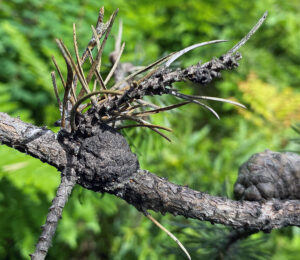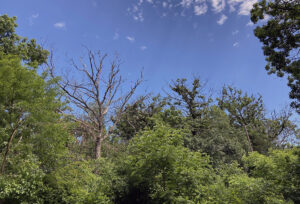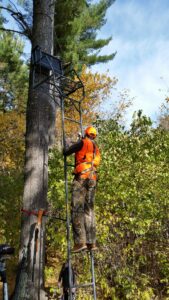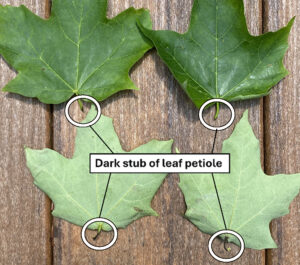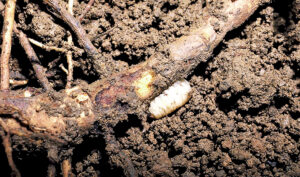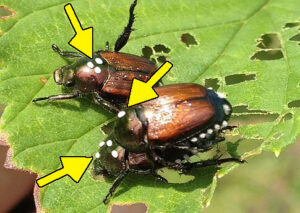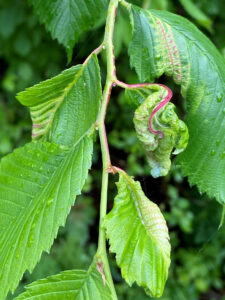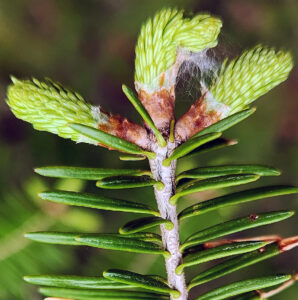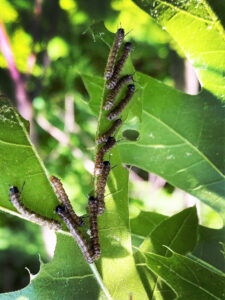
Young pink striped oakworm caterpillars feed gregariously on northern red oak leaves. / Photo Credit: Wisconsin DNR
By Linda Williams, DNR Forest Health specialist, Woodruff
Linda.Williams@wisconsin.gov or 920-360-0665
Young larvae of the pink striped oakworm (Anisota virginiensis) have been observed feeding gregariously on northern red oak leaves in Vilas County. Northern red oak is their preferred host, but they can feed on other oaks.
Young caterpillars start life with a shiny black head capsule, but older larvae develop an orange head. Their pinkish body coloration develops as they get older, as well; young caterpillars are dark green in color.
Pink striped oakworm has several fly parasitoids, along with a couple of wasp parasitoids. Populations of pink striped oakworm in Wisconsin don’t usually grow too large or cause problems.

